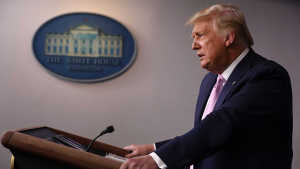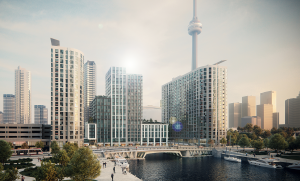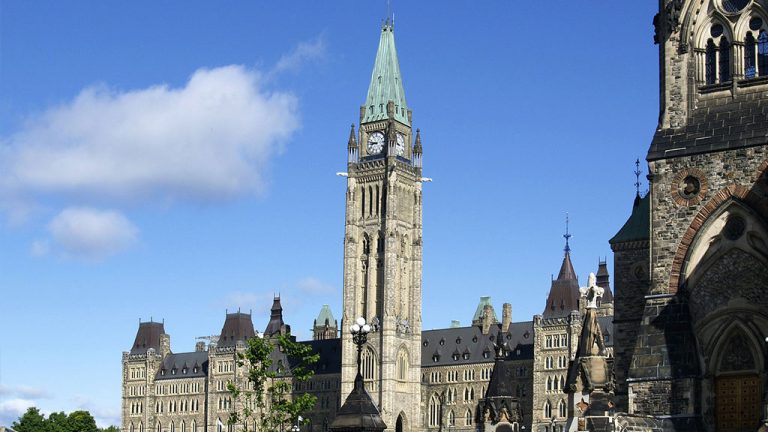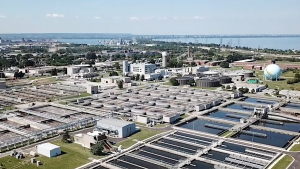MONTREAL ŌĆö Canadians hoping plans for high-frequency rail between Toronto and Quebec City would move forward this year will instead see further delays ŌĆö and the prospect of a federal election makes the timeline more uncertain than ever.
Late last year, the federal government requested an extension on bids to build the rail corridor in a move that could push back selection of a private partner by several months beyond the initial deadline near the end of 2024.
The holdup marks a minor setback to a project slated to span more than a decade. But while some observers worry the postponed proposal bodes ill for the pricey enterprise, others fret the whole undertaking could be thrown into limbo with a potential change in government around the corner following the prime ministerŌĆÖs planned resignation.
Selecting a consortium to shepherd the project through its planning and construction phases ŌĆö and to run and maintain it afterward ŌĆö is a key step in the process. The Transport Department had said the winning contractor, which would design, build and operate the tracks, was slated to be announced by late fall of 2024.
ŌĆ£Everybody I know whoŌĆÖs involved in the rail industry is kind of waiting with bated breath because they expected this announcement to happen in early December,ŌĆØ said Terry Johnson, president of passenger advocacy group Transport Action ║┌┴Ž│į╣Ž═°.
In 2021, the federal Liberals laid out plans for a new rail corridor with stops in Toronto, Peterborough, Ottawa, Montreal, Laval, Trois-Rivi├©res and Quebec City. At the time, Ottawa pegged the cost at between $6 billion and $12 billion.
The goal was to transport more passengers quicker and more often than the delay-plagued trains at Via Rail, whose aging fleet runs on tracks owned largely by Canadian National Railway Co., which gives priority to freight trains.
Johnson is also worried the pushed-back timeline could make it easier for new leadership in Ottawa to scrap the project altogether. On Jan. 6, Prime Minister Justin Trudeau announced he would step down after a Liberal leadership race, with Parliament prorogued until March 24. His replacement would face a likely confidence vote that could bring down the government, trigger an election and result in a Conservative sweep, given recent polling.
ŌĆ£Any change of government will almost certainly lead to a process of reconsideration of everything the previous government has done before, either confirming it or changing it in some way,ŌĆØ Johnson said.
Conservative Leader Pierre Poilievre’s office did not directly respond to questions on whether he supports the project.
“After nearly a decade of the Trudeau Liberal government, there is no high-frequency rail project to speak of, it doesnŌĆÖt exist,” said Conservative transport critic Philip Lawrence in an emailed statement, referring to the governing party as “all talk.”
Pierre Barrieau, who teaches transportation and urban planning at the University of Montreal, says the competing proposals lay out complex plans that demand thorough analysis and that months-long delays for the megaproject should come as no surprise.
ŌĆ£The three bids are not bidding on the same thing, basically. One might have said, ŌĆśI’m building a tunnel here,ŌĆÖ another one is doing a bypass there,ŌĆØ Barrieau said. ŌĆ£One might be saying 250 kilometres per hour, another one might be saying 375.ŌĆØ
The three consortia selected to submit proposals are: Cadence, which includes AtkinsR├®alis (formerly SNC-Lavalin) and Air ║┌┴Ž│į╣Ž═°; Intercity Rail Developers, which includes Montreal billionaire Andr├® DesmaraisŌĆÖs DF ║┌┴Ž│į╣Ž═° Infrastructure Group Inc.; and QConnexiON Rail Partners, which includes WSP ║┌┴Ž│į╣Ž═°.
The request for proposals asked each of the three groups for a pair of bids: one for a conventional rail network where trains would top out at 200 km/h (the current limit is about 160 km/h) and one for a high-speed rail corridor.
ŌĆ£ItŌĆÖs really hard to compare a Hyundai Tucson with a Porsche,ŌĆØ said Barrieau, adding these kinds of delays, while unwelcome, are par for the course with this scale of project.┬Ā
ŌĆ£All megaprojects are always late. All megaprojects almost always have cost overruns,” he said.┬Ā
Nonetheless, the turmoil in senior Liberal ranks as cabinet ministers gear up for possible leadership runs under the eye of a lame duck Prime Minister could knock the bidder selection timeline off-kilter.
ŌĆ£This has to go to cabinet,ŌĆØ Barrieau said. ŌĆ£ThereŌĆÖs a lot of people that have to sign off.”
The office of Transport Minister Anita Anand ŌĆö among the potential contenders for the top Liberal spot ŌĆö said extensions are “standard,” with the possibility included in the request for proposals.
ŌĆ£No contract has been awarded to a consortium for the rail project on the Quebec-Toronto corridor. I look forward to sharing more when the time comes,” Anand said in an emailed statement.
The postponed announcement comes on the heels of previous delays as well as multiple failed high-speed rail plans over the past half-century.
The federal government slowed the timeline on the fast passenger railway in July 2023, when then-transport minister Omar Alghabra said he hoped the line would be running by the mid-2030s rather than the beginning of the decade, which he’d previously projected.
Meanwhile, the transport ministerŌĆÖs office has hosted three ministers in the span of 14 months ŌĆö Anand took the helm in September. That lack of continuity could cramp the pace of the project, experts say.
The halls of government are littered with the bones of high-speed rail plans gone awry ŌĆö pre-feasibility studies, market assessments, special reports, task force papers. Two dozen such analyses have been carried out since 1984, according to the High Speed Rail ║┌┴Ž│į╣Ž═° platform, an online resource on the subject.┬Ā
In 2018, Ontario Premier Doug FordŌĆÖs Conservatives scrapped preliminary plans for a high-speed rail corridor in southwestern Ontario announced by his Liberal predecessor, Kathleen Wynne.
Studies published in 1995 and 2011 ŌĆö the latter launched jointly by Ontario premier Dalton McGuinty and Quebec premier Jean Charest ŌĆö also came to naught.
The corridor between Toronto and Quebec City would run along mostly brand new track on land owned largely by ║┌┴Ž│į╣Ž═°ŌĆÖs two rail giants, CN and Canadian Pacific Kansas City Ltd.
It could require hundreds of millions of dollars on construction of underpasses alone, since the lines could not host road crossings, according to Transport ║┌┴Ž│į╣Ž═°. Other infrastructure such as uninterrupted fencing would also be necessary, on top of buy-in from a bevy of local and provincial governments.
Martin Imbleau, who heads the project ŌĆö a subsidiary of the federally owned Via Rail ŌĆö has forecast that the corridor would host 17 million riders per year by mid-century, far outstripping the 4.1 million of 2023.
┬®2025 The Canadian Press











Recent Comments
comments for this post are closed